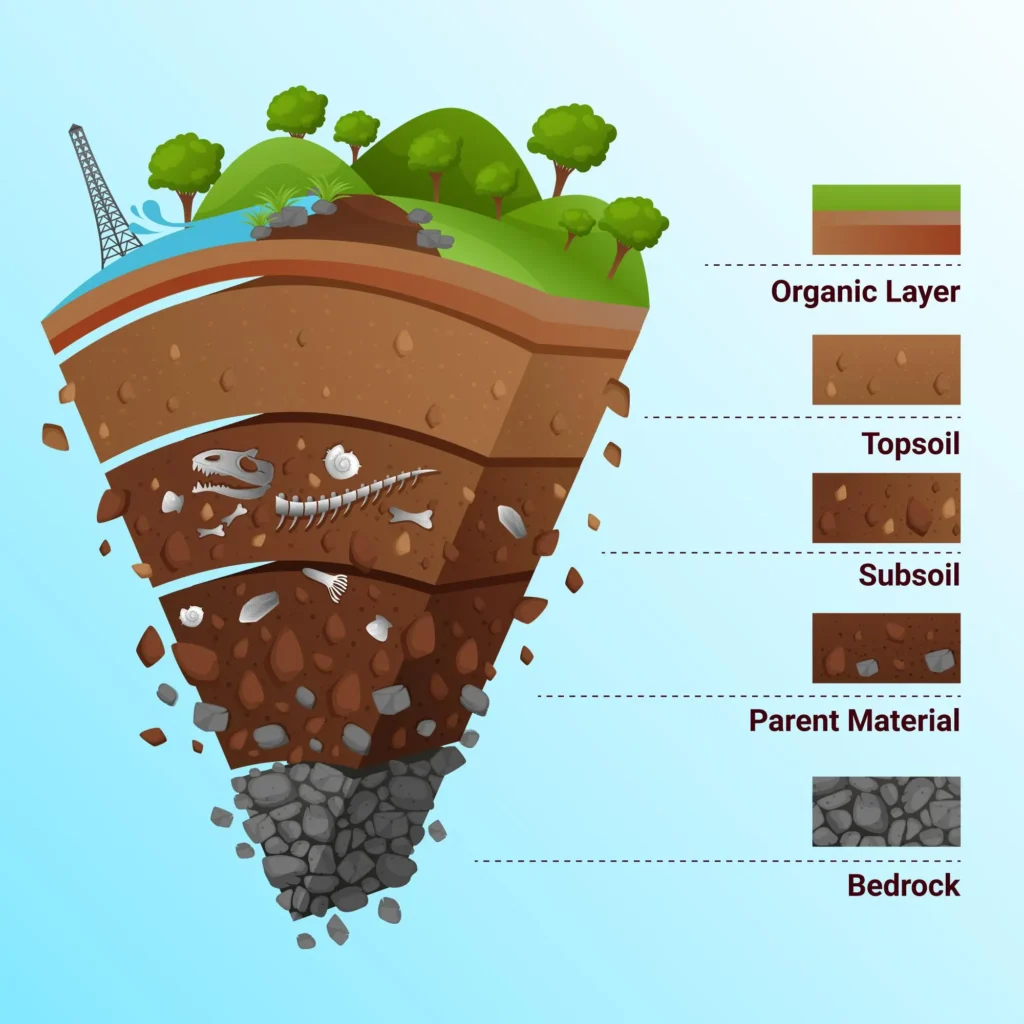Soil contains both biotic and abiotic factors. It is a living ecosystem composed of biotic factors (plants, animals and microbes) and abiotic factors ( minerals, water and air). If you take one gram of soil, then there is a higher possibility that it may be a house for over a billion microorganisms of different species.
As we have discussed earlier in our article on the soil definition, soil is mainly composed of four components mineral matter, organic matter, water & air and these components can not be separated easily. Quartz, biotite, muscovite, etc. are the most commonly found minerals in the soil.

Soil organic matter (Biotic) is composed of living and partly decayed substances from plants and animals. Only 3 to 5% by weight of the soil in the top layer is made up of organic matter. The presence of organic matter or biotic components in the soil is important to support plant growth as they are a rich source of nutrients such as nitrogen, phosphorus, potassium, etc. to the plants.
Moreover, to support the life of microorganisms in the soil, organic matter plays a crucial role. Water and air are usually present within soil pores. Organic matter present in the soil also plays an important role in water retention and soil structure. That’s why at present when the practice of excessive tillage and agrochemicals have destroyed soil organic matter to a large extent, environmentalist are worried about the future.
Some of the commonly found microorganisms in the soil are archaea, bacteria, actinomycetes, fungi, algae, protozoa, springtails, mites, nematodes, earthworms, ants, insects, etc.
If we look at the volume composition of the soil, then in general it is composed of solid space and pore space. Solid space is made up of mineral matter (about 45%) and organic matter (about 5%) and pore space is made up of air (25%) and water (25%).
If you have any queries, ideas or suggestions, then please comment below. You can also connect with Agriculture Review on Facebook, Instagram, Koo and WhatsApp Messenger.



